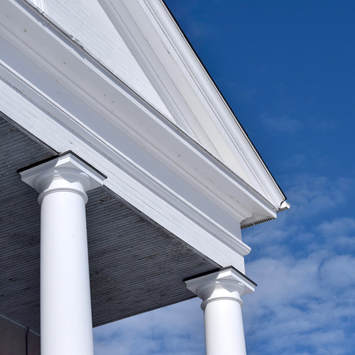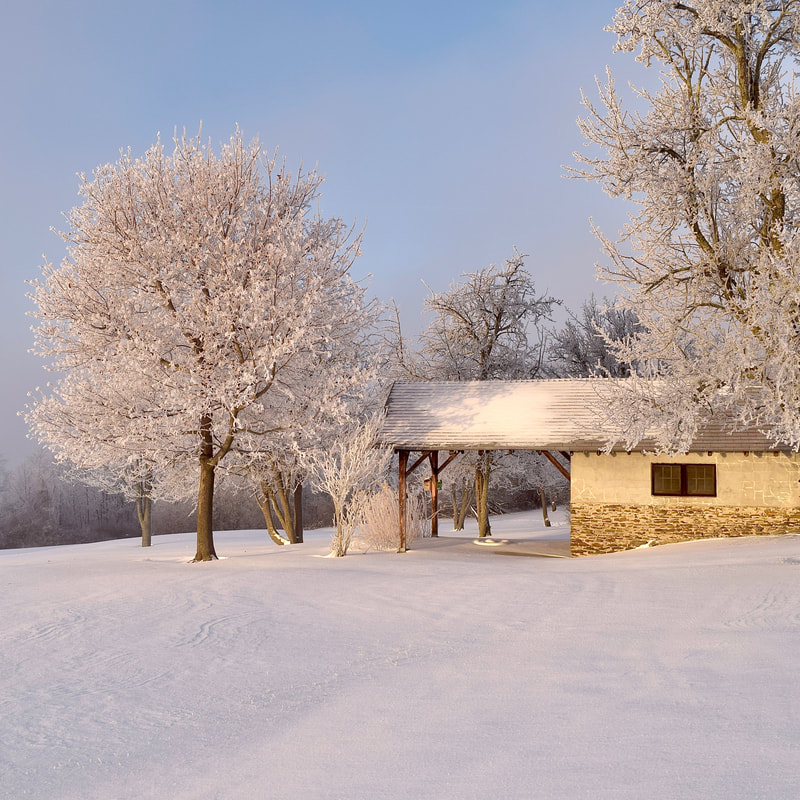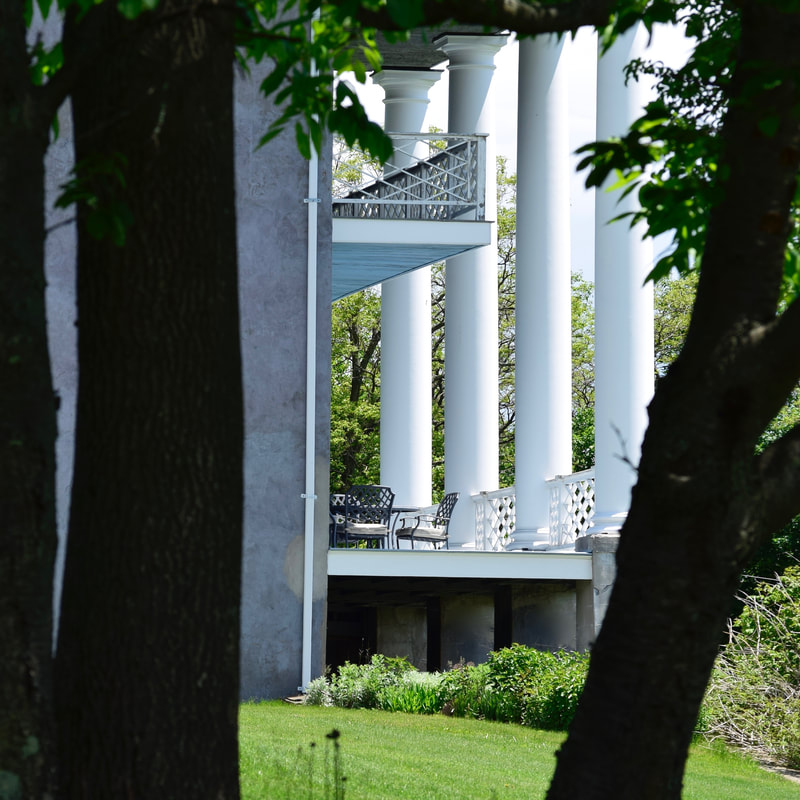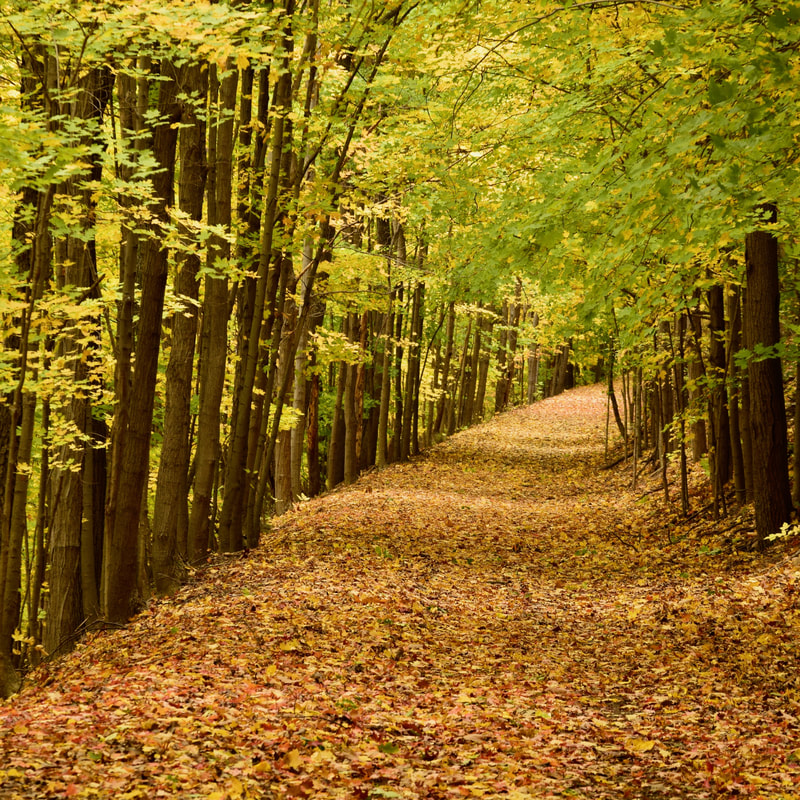|
Lawn
A stone wall extends from the driveway to the Spring House, forming a large arc to the south and east of the Mansion. Legend has it that several Seneca Indian Chiefs are buried under the wall. Along the north edge of the lawn are several Wagener apple trees. This was a variety established by Wagener when he lived on Main street in Penn Yan. They are excellent for apple pies and applesauce, and have survived for many years with little or no care. Spring house The origin and original use of the spring house is unknown. Most likely it was constructed by Morris. Either Conrad or the Champlain's renovated the building by adding a kitchen, bath and utility room on the west side. The Champlain's advertised it as a “housekeeping cottage for two”, “with patio, electrified kitchenette, full tiled shower and tub, twin beds, tastefully and comfortably appointed, all linens provided.” The rental cost was $75 per week or $12 per night. Located under the terrace is a natural spring, which is the Mansion's water supply. Legend has it that this spring was a Seneca Indian ceremonial site. The Seneca's referred to it as the “Big Spring”. Barn Remains The foundations of the original barns are located to the east of the house across the old road. They were destroyed by fire while owned by Paul Garrett. The following is copied from a Chronicle Express Scrapbook column reprinted 11/27/91. The icy cold winter waters of Lake Keuka were twice warmed last week by the reflection of fires on or near the shores. The first was Thursday afternoon, when the Clyde Moore cottage home on the West Branch was razed by flames. The second, a spectacular conflagration atop Bluff Point, where the three barns and silo on the old Wagener place, now owned by Paul Garrett, were burned early Saturday evening. As far north as the Canandaigua-Geneva turnpike (present day routes 5 & 20), motorists saw the glow in the sky. As they neared Rushville, the flames were even visible. From all points across Lake Keuka the burning barns furnished a magnificent spectacle, reminiscent of the signal fires undoubtedly burned there not many years ago by the Senecas. In a barn filled with equipment, and standing near the old road as it turns down the side of the Bluff, is where the flames originated. A 30 foot fence connected this with the next barn filled with grain. Flames were being carried by the wind across the fence when the fire was first noticed by Howard Gridley. The Pumper from the Penn Yan Fire Department was summoned, but did not respond because of bad roads and the reported lack of water supply on top of the Bluff, 800 feet above the lake. Walter Wren superintends the interest on the Point of Paul Garret's, who was in New York City Saturday. Arthur Berryman and Gerald Griffeths arrived at the scene of the fire soon after Mr. Gridley, and were able to save some of the grain. The origin of the fire is a mystery. Mrs. McMinn, a neighbor in that vicinity, thought she saw an auto drive away before the blaze. But others traveling the same road at the same time do not report seeing the car. It was thought that someone might have stepped inside the building and carelessly discarded a cigarette. |




